Turning Neighborhoods into Communities
How 3 Supernuclear readers became case studies for local connection
Editor’s note: this is a guest post from August Elliot, one of the facilitators and leaders of the Neighborhood Village Project.
Everyone knows there are benefits to building community, but it can be hard to figure out where to start - especially if you’re new to town and have a bit of imposter syndrome. The case studies below show three very different ways to create connections and the good things that come when you put yourself out there.
Hi, my name is August Elliott, and I've spent years exploring the question:
What happens when neighbors stop being strangers, and become the community we’re seeking?
I help run the Neighborhood Village Project (previously known as the Neighborhood Accelerator Program (NAP)) which has people answer that question. Not in the forced, committee-meeting way, not through another app promising to "build community," but in the simple, dedicated yet almost accidental way that humans have always done it — one borrowed cup of sugar, one picnic potluck, one "hey, I noticed your trash cans aren't out and the truck is almost here" at a time. We guide people through a 10 week program (and beyond) to help them find, cultivate, and nourish the close-knit neighborhood community they wish existed.
Last year, my teammate Savannah shared case studies of turning neighborhoods into communities here on Supernuclear and invited readers to consider doing the same.
And then you wrote to us. From an apartment building in New York where thirteen doors had been closed to each other. From a Southern California neighborhood where 350 people were apparently just waiting for someone to ask. From a small Polish village where the library was about to close until the neighbors decided it wouldn't.
Here are three of those stories, from Supernuclear readers who took a chance.
Case Study: Neighbors of NoMad NYC
Neighborhood Steward: Ian Howe
Location: NoMad/Flatiron, New York City
Origins
Ian: Last year I was overcome by this desire to get to know the people that lived in my building, so that when I walked past them in the hallway I could say 'oh hello Jeremy!' and have these small, positive splashes of human interaction in my day-to-day. Reading through the Supernuclear post from last year was the final push I needed to bring this idea to life!
So after weeks of overthinking and a little direction from NVP, I came up with a plan. I typed up a letter that explained my motives, along with a link to a Whatsapp group chat. I then printed these letters, popped them in some fancy envelopes, and slapped them to the front doors of all 13 units in my building. The majority of my neighbors were surprisingly responsive, and I've been able to loop in almost everyone!
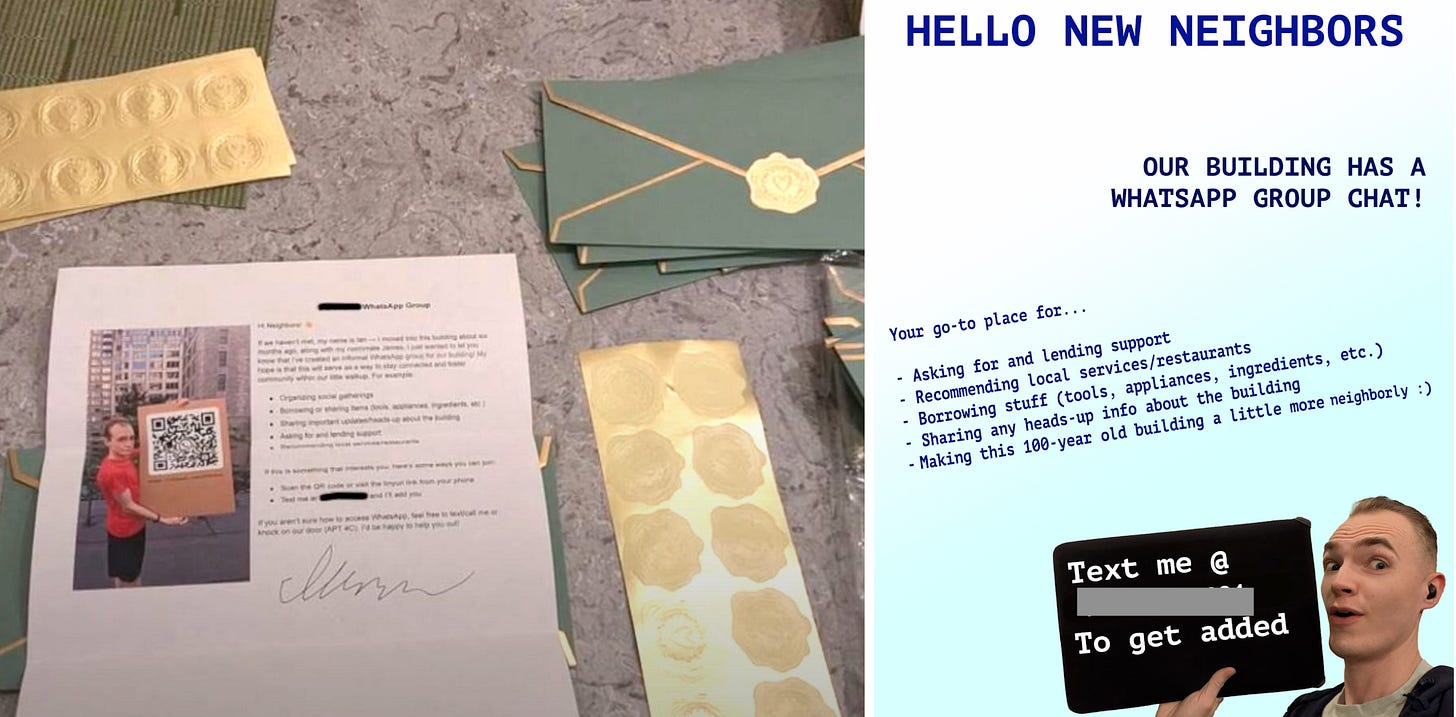
The Whatsapp group was the initial thread that connected everyone, but neighborliness becomes so much stronger once you can get some amount of face-to-face interaction. So I focused on encouraging in-person interaction wherever possible. I made sure to say hello to people in the hallway. I gave away things I didn't need. If I saw people moving in, I’d offer to lend a hand and invite them to the group chat, which helped to set the tone for neighborliness.
Since I live in a relatively small building, I’ve focused on small-group opportunities like having people over for a home-cooked dinner, coffee chats, or including them alongside our friends in the events that my roommate and I host.
While I came into this looking for the warm fuzzies of social interaction, I later learned how beneficial these connections can be when people are in need. At one point someone got trapped inside their own apartment, and neighbors were able to come over right away to help get their front door un-stuck.
Earlier this year I caught a cold and asked if anyone had a spare covid test lying around. While no one had a test available, one of my neighbors came over with some homemade chicken noodle soup to help me feel better.
One night, people woke up to the sounds of someone screaming in the building, and our chat served as a place to understand what was going on. Turns out we have new neighbors, their child has autism and was having trouble adjusting to the new living situation. Keeping the parents connected to the group chat ensured a shared sense of understanding and support within the building.
Lessons Learned
Every day becomes a little more wholesome
This project has allowed me to weave those small, happy moments into the busy life I already live. I don't have to go anywhere to seek them out, they just spontaneously spring up!
Someone in NVP described neighborhood building as giving you a sense of x-ray vision: now when I walk past the doors in my building, I have a sense of the unique and flourishing lives of the people behind each of them.
(from August): Next we travel to Santa Monica, California, where Tess didn't have hallway neighbors to connect. Instead, she wanted to connect her whole neighborhood.
Case Study: Ocean Park Community, Santa Monica, CA
Neighborhood Steward: Tess Nelson
Location: Ocean Park, Santa Monica, CA
Origins
Tess: In 2022, I moved to a new neighborhood in Santa Monica, rented my first apartment alone, and started my first fully remote job. The isolation came as a major shock to my system. In my attempts to create a more social life, I stumbled across Phil Levin and Priya Rose’s webinar on How to Live Near Friends. They described methods to build geographic closeness among friend groups. I didn’t want to move again nor was I getting traction convincing friends to move to my neighborhood, so instead I decided to make a major effort to get to know my existing neighbors.
Trouble was, I didn’t know how to go about doing this! How does one systematically build a rich, social neighborhood? After a few false starts I read case studies in this very Supernuclear Substack about the Neighborhood Village Project. It was everything I was looking for: a committed group of “neighborhood nerds” who met weekly to take thoughtful steps to develop a connected local community.
The Journey
Our first assignment was to define the bounds of our neighborhood. Second, draft a flyer and invite our neighbors to an event in the near future. This is one of the scary parts: building up the courage to go out and invite your neighbors. But with the peer support of the cohort, we encouraged one another to face our fears. And in the following weeks, we would relish in the many warm responses our flyers had received.

My goal in Ocean Park was to create a community that included anyone within a 5 minute walking radius of my apartment. To tackle this, I stapled signs to telephone poles and in a coffee shop. Within minutes of posting the flyers, I had 10 responses. Within a couple of months, there were over 350 responses.
The first event I hosted was a Happy Hour. I was so nervous that too few or too many people would show up that I barely slept the night before. ~30 neighbors attended and it was a raging success!! As we left, my boyfriend commented that this event was the most cool and normal bunch of strangers we had ever met.
In these first few weeks, I received offers from several neighbors to help plan events moving forward. About 3 months into this process, a group of 7 neighbors and I sat down over a potluck dinner and discussed our community vision. We generated event plans (with delegated hosts) for the next 6 months and we have since hosted a Social Reading Event, a Chili and Cornbread Cookoff, a monthly Book Club, and a Summer Picnic Series.
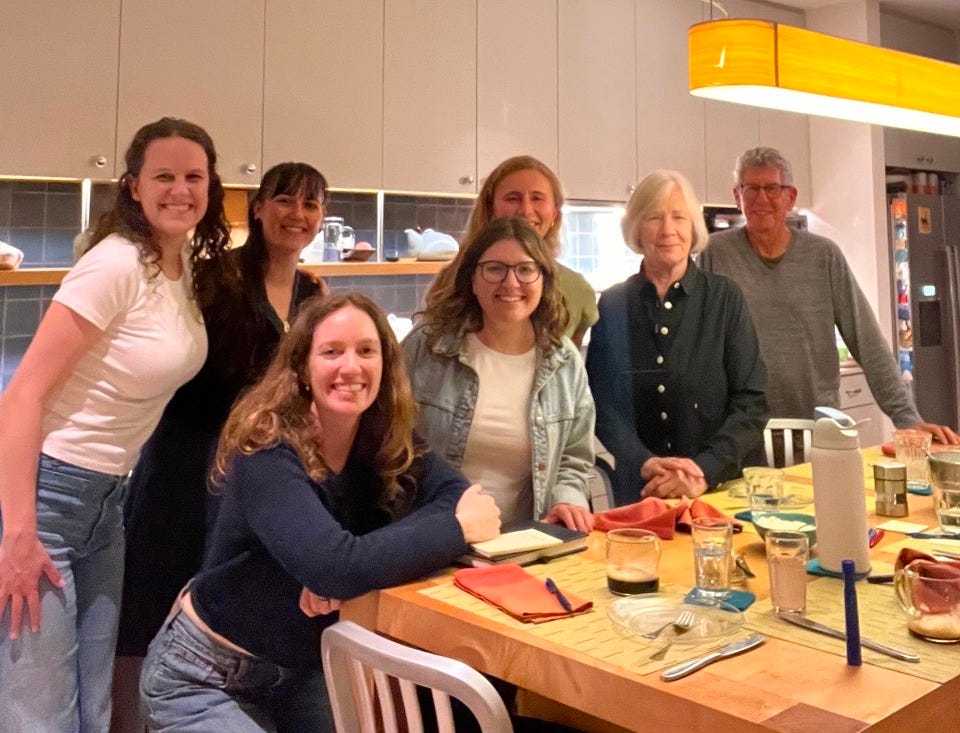
Lessons Learned: be the invitation you wish you had!
Everyone thinks everyone else has more community than they do. But I’ve found that people are far more disconnected than you think. If you’ve ever thought that you’re “too new” or “not new enough” to be the one to build a community, I urge you to think again!
From my experience in Santa Monica, a large majority of neighbors are walking by each other with the same wants, but need a leader to bring them together. Be the person who asks: should we make this neighborhood a community? I promise you will spark a powerful change to the neighborhood.
Now let’s cross an ocean and venture into a small Polish village where Marta discovered what happens when you give connection time to root.
Case Study: Brzeźnica
Neighborhood Stewards: Marta & Marcin, Justyna, Ela, Benia
Location: Brzeźnica, Lower Silesia, Poland
Origins
Marta: Four years ago, my partner Marcin and I left behind urban anonymity for life in Brzeźnica, a beautiful Polish village of over 500 residents. We knew absolutely no one.
Our goal was ambitious yet simple: build genuine community connections from the ground up. I began offering free yoga classes to local women—creating a regular, welcoming space where people could connect beyond casual greetings. What started as simple exercise sessions gradually blossomed into real friendships, shared activities, and those precious spontaneous moments that define true community—neighbors inviting each other for Sunday walks, sharing their garden bounty, or simply checking in during difficult times.
The crucial thing was consistency: no matter what, we met every Wednesday afternoon to practice yoga together. It was a conscious choice, supported by my other efforts: bringing home-baked goods and occasionally hosting garden potluck dinners. No matter if two or two dozen people decided to join the classes–I was there.
The importance of frequency and focusing on people who joined the event was something I learned when attending NVP sessions. One big event from time to time is nice, but what makes a difference is having regular, smaller gatherings, open to anyone, regardless of how many people decide to join them.
Additionally, when leading the yoga classes, I was able to meet more neighbors. The regulars invited their neighbors, friends, cousins, and introduced me to new faces. It also allowed me to understand local dynamics better and learn more about each individual’s passions, skills, and strengths.
These conversations led to the discovery of one of the neighbors being into herbal medicine. It didn’t take much to encourage her to start organizing regular herb walks and workshops for the village.
Next, I decided to set up our village WhatsApp group as part of my NVP weekly homework, starting with about ten neighbors and asking them to invite three neighbors each. This simple request rapidly expanded our network. The group became our digital village square, essential for sharing everything from event announcements to emergency support, like coordinating water deliveries during a supply crisis.
Our first real test came when the village library faced closure after our beloved librarian retired. Rather than accept this loss, we launched a persistent lobbying campaign with the mayor. Initially, we secured just one day of weekly operation—a victory that felt enormous. A real breakthrough came when we met the new director of cultural institutions. By emphasizing the library's role as a community cornerstone, we successfully doubled its operating hours. This experience became our masterclass in advocacy: persistence pays off, and every victory builds momentum for larger changes.
Lessons Learned
Partner, don't compete
Working alongside existing organizations—the fire brigade, football club, and village council—amplified our impact exponentially. Instead of duplicating their missions, we offered complementary support and created new opportunities they couldn't pursue alone. Together we organized a yearly harvest festival, fun activities for kids, a quiz about Brzeźnica, and had a first (and not last!) yeast cake competition. We also partnered up with the youth division of a volunteer firefighters team to organize a traditional fortune-telling night.
Embrace the long game
I am an impatient person by nature, so this lesson is especially profound for me. However, almost every month, I see a new person from our neighborhood joining some activities for the first time: attending yoga classes after her friend convinced her that it was achievable for her, participating in workshops, or taking a field trip.
Four years later, Brzeźnica truly feels like home. Not because of the beautiful countryside, but because of the web of relationships and shared initiatives we've woven together. We've learned that community isn't something you find—it's something you build, one connection at a time.
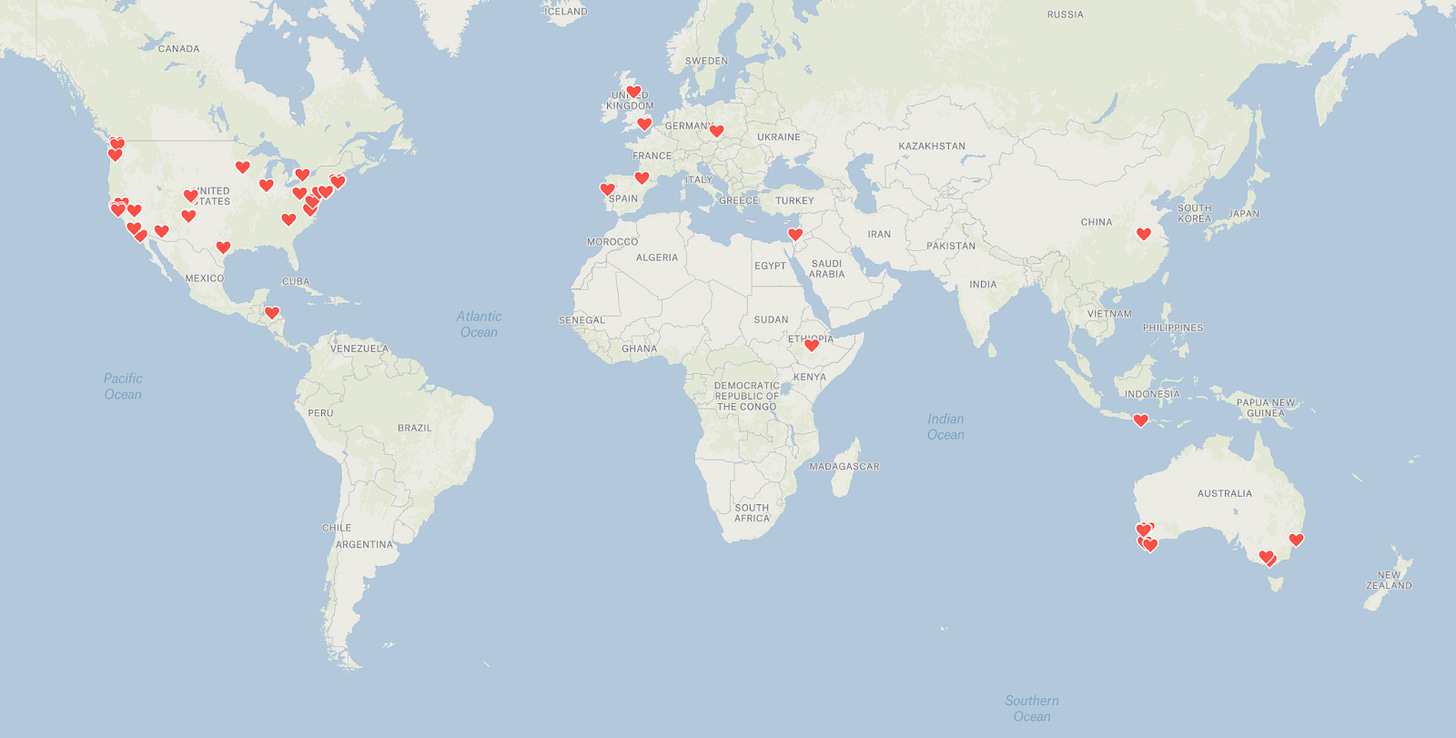
August: Whether we’re inviting our friends to live near us, or we’re inviting those who live near us to be our friends, working toward a lived sense of community is a worthwhile endeavor.
To that end, we asked these three Supernuclear readers to try on a few techniques, some simple and some less so. We brought together a global group of collaborators for guidance and accountability. We supported them, they supported each other, and one by one, doors were opened and strangers weren't so strange anymore.
If you’ve read this far and you’re curious what it might look like to turn toward your neighborhood and see what’s possible, reach out and say hello. We gather quarterly and we’d love to have you join us for the next round!
Suggested further reading:
Stoop Coffee: How a Simple Idea Transformed My Neighborhood
Editor’s note: This is a guest post from Patty Smith. Patty and her husband enjoy the kind of neighborhood so many of us would like - connected, helpful, fun - but it wasn’t that way two years ago. A simple tradition changed their neighborhood and is a good reminder of how small, consistent actions can have outsize results. It also shows you don’t have …
Does your friend next door need to be your *best* friend?
[This is a X-post from the Live Near Friends blog]

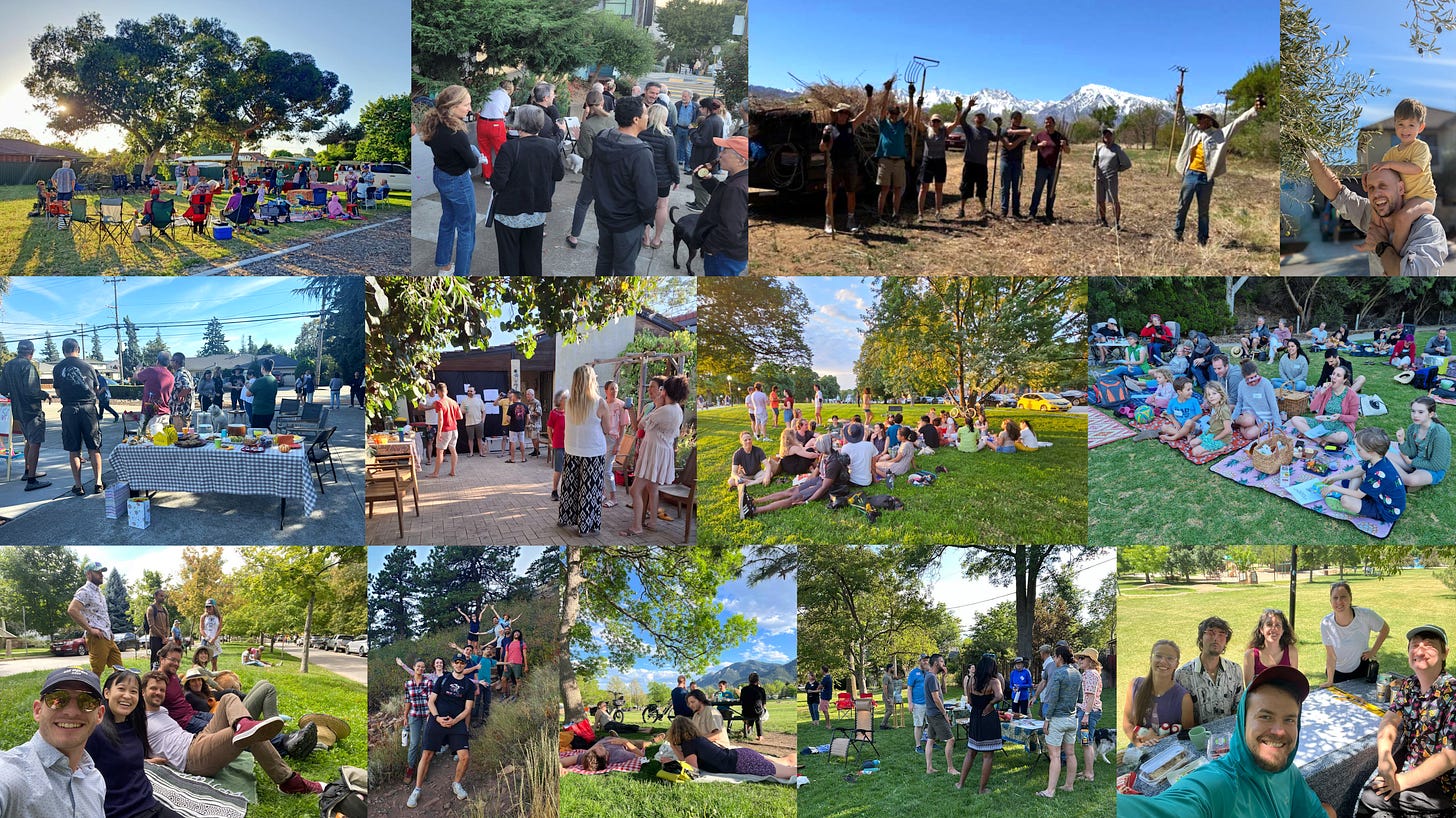
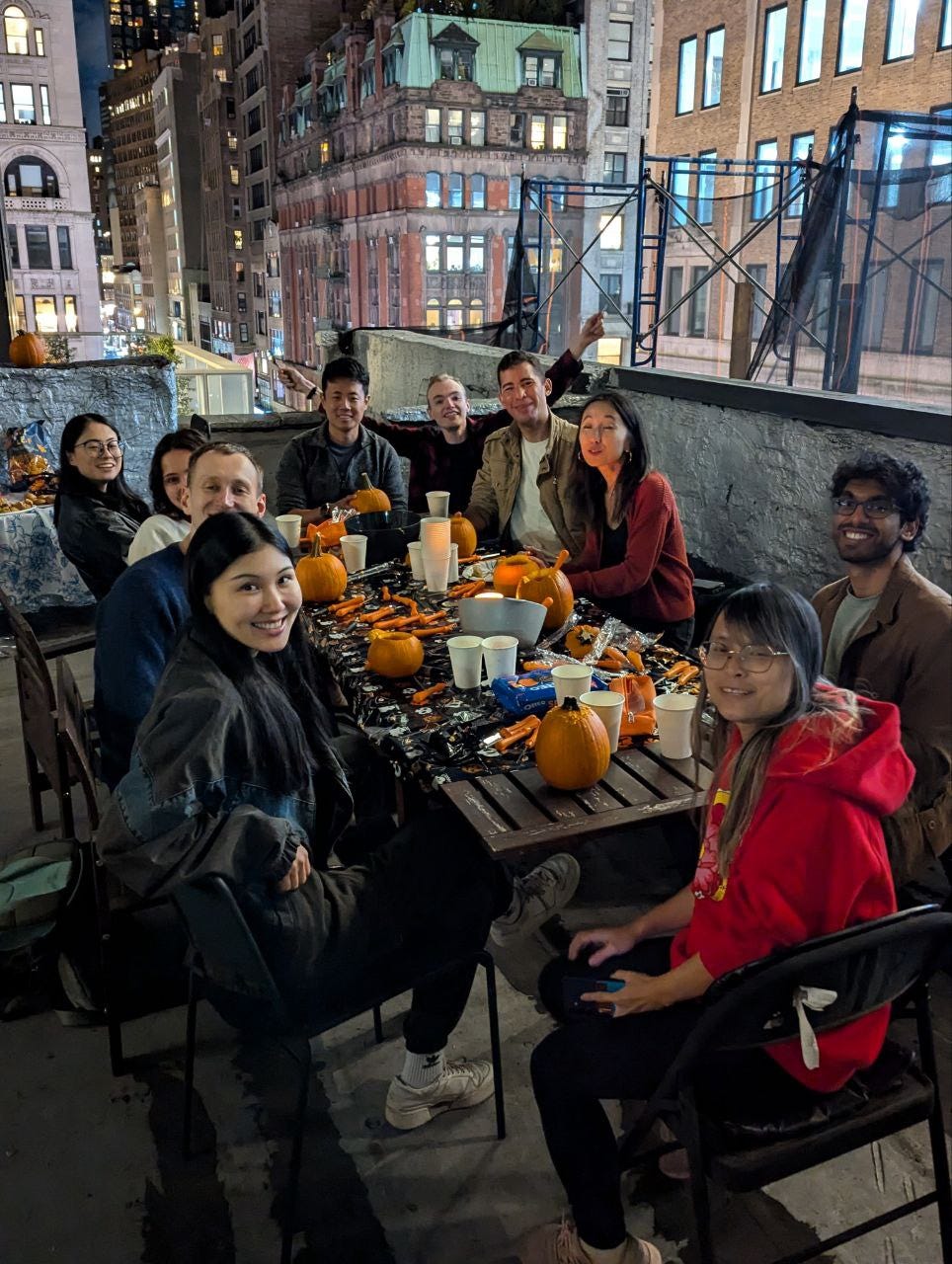
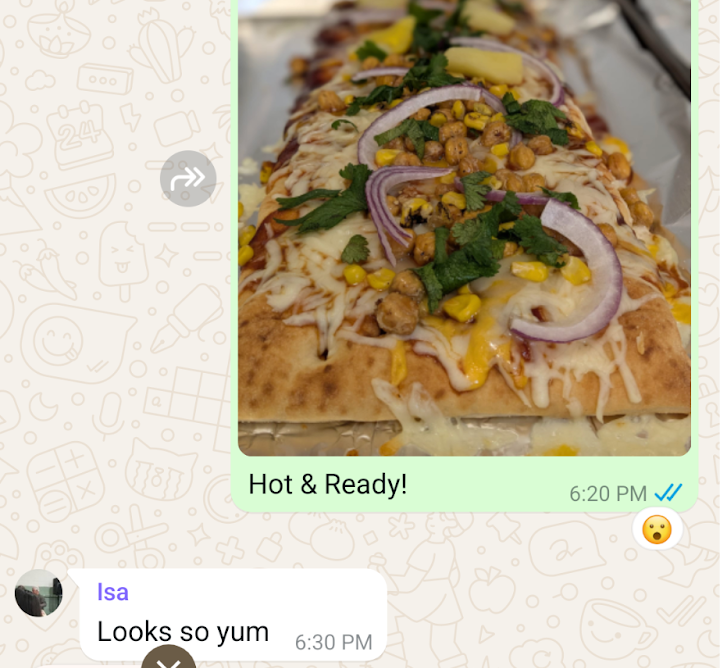
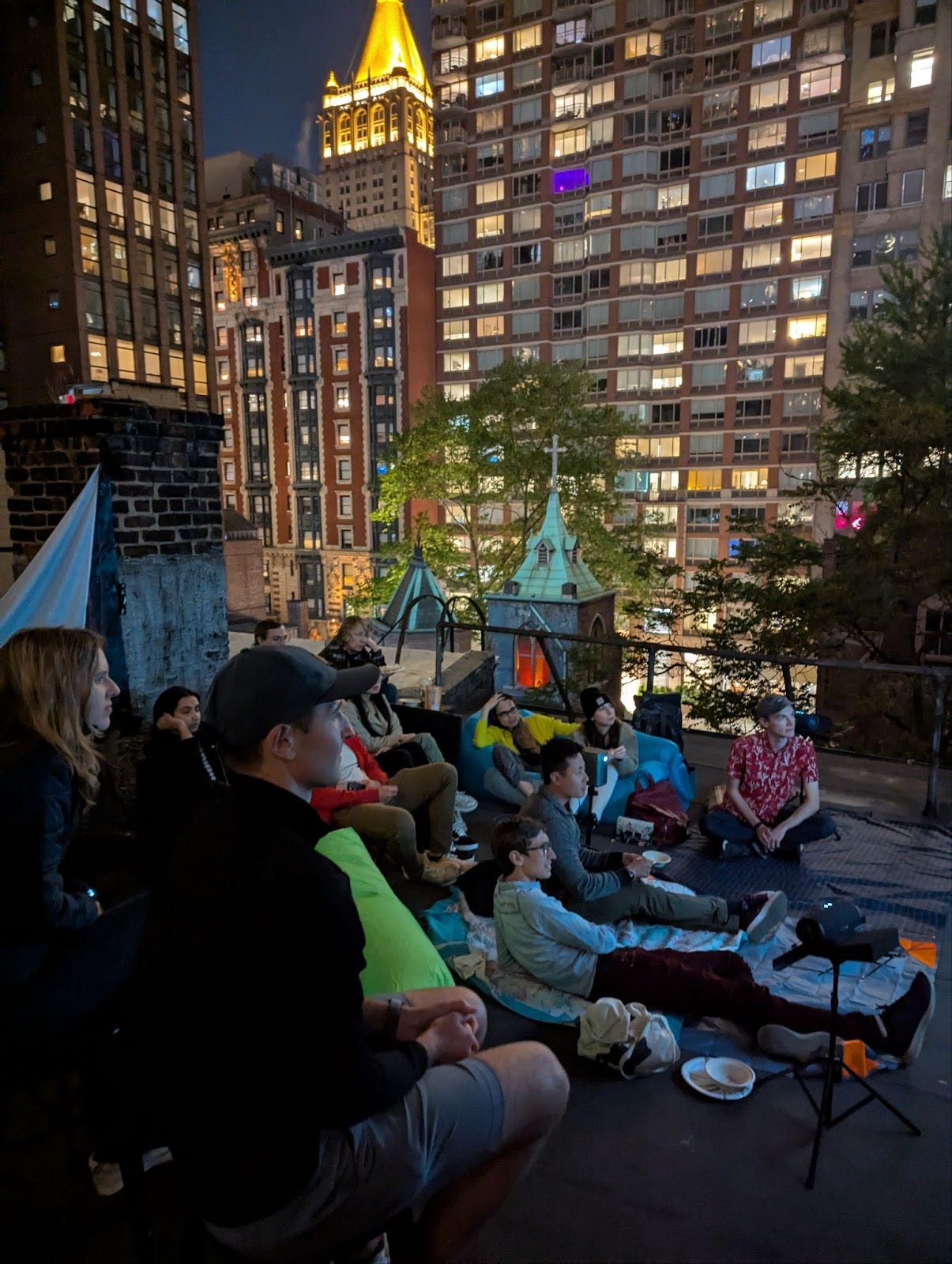

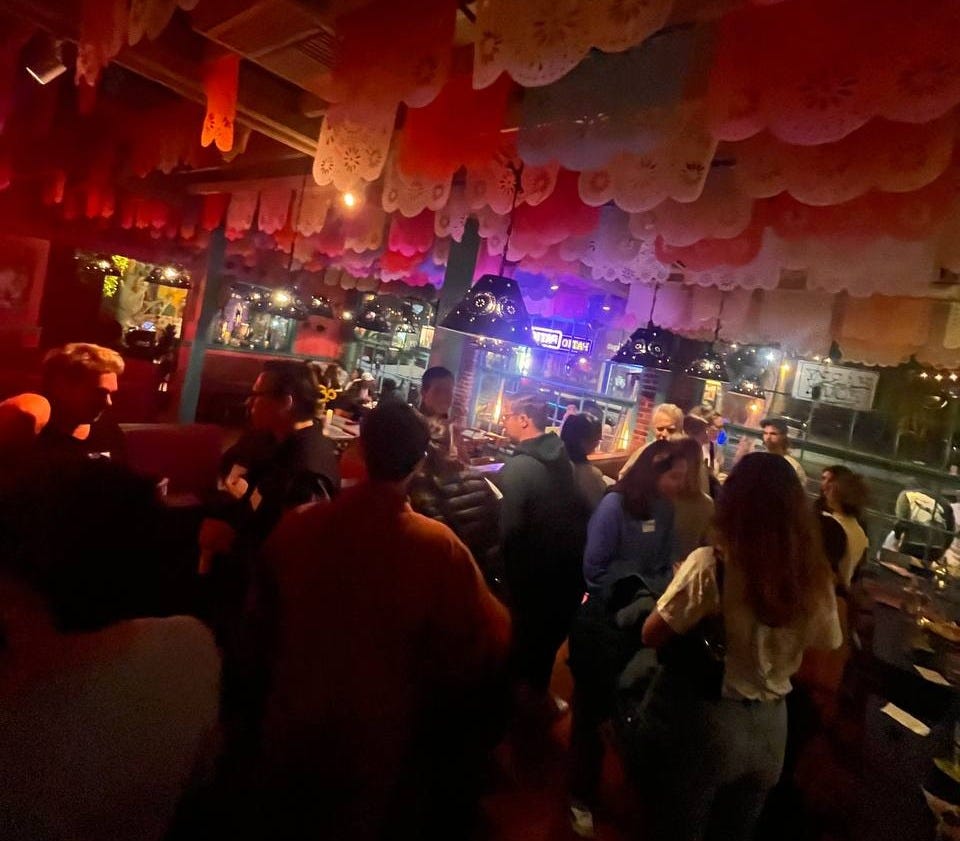
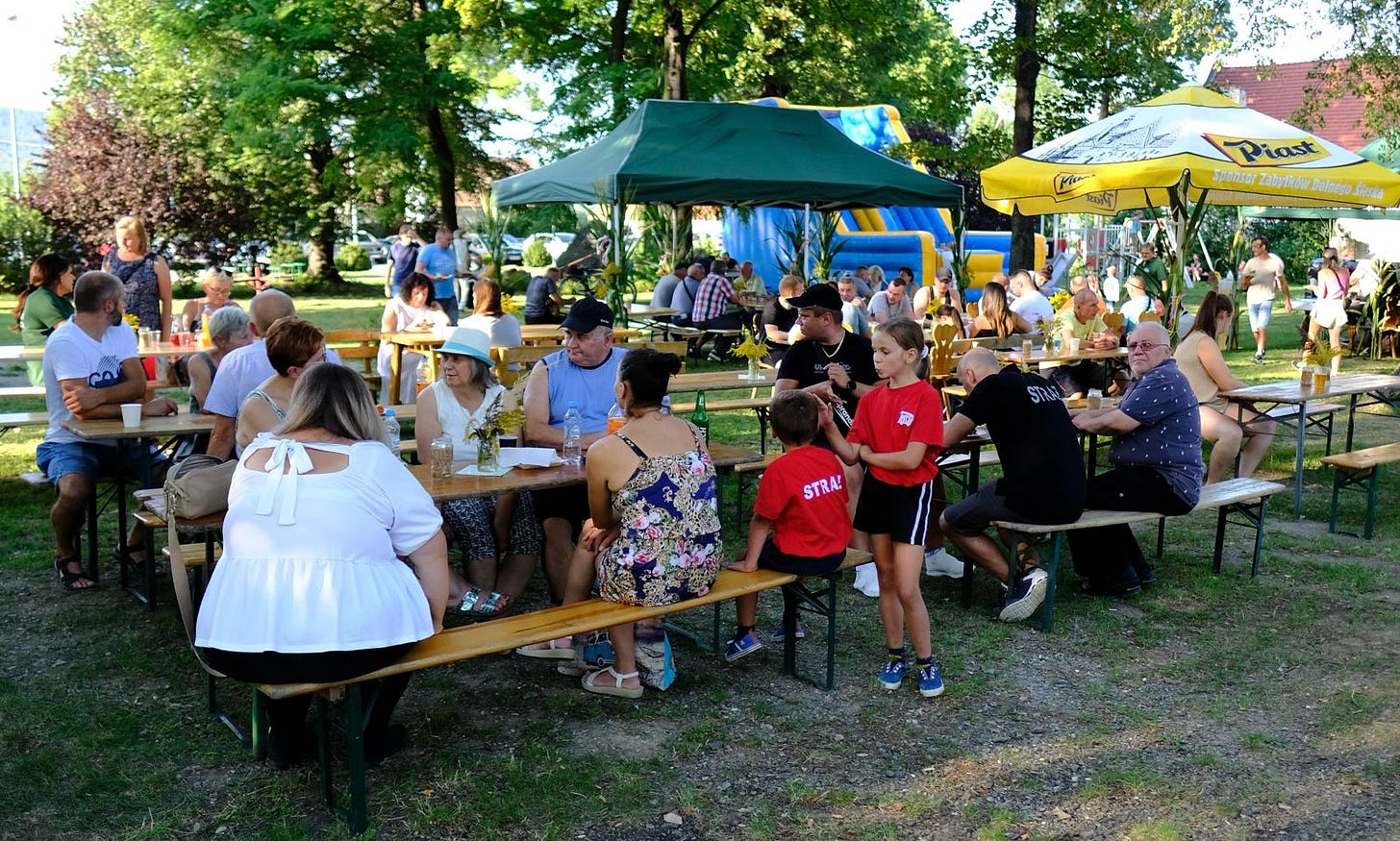
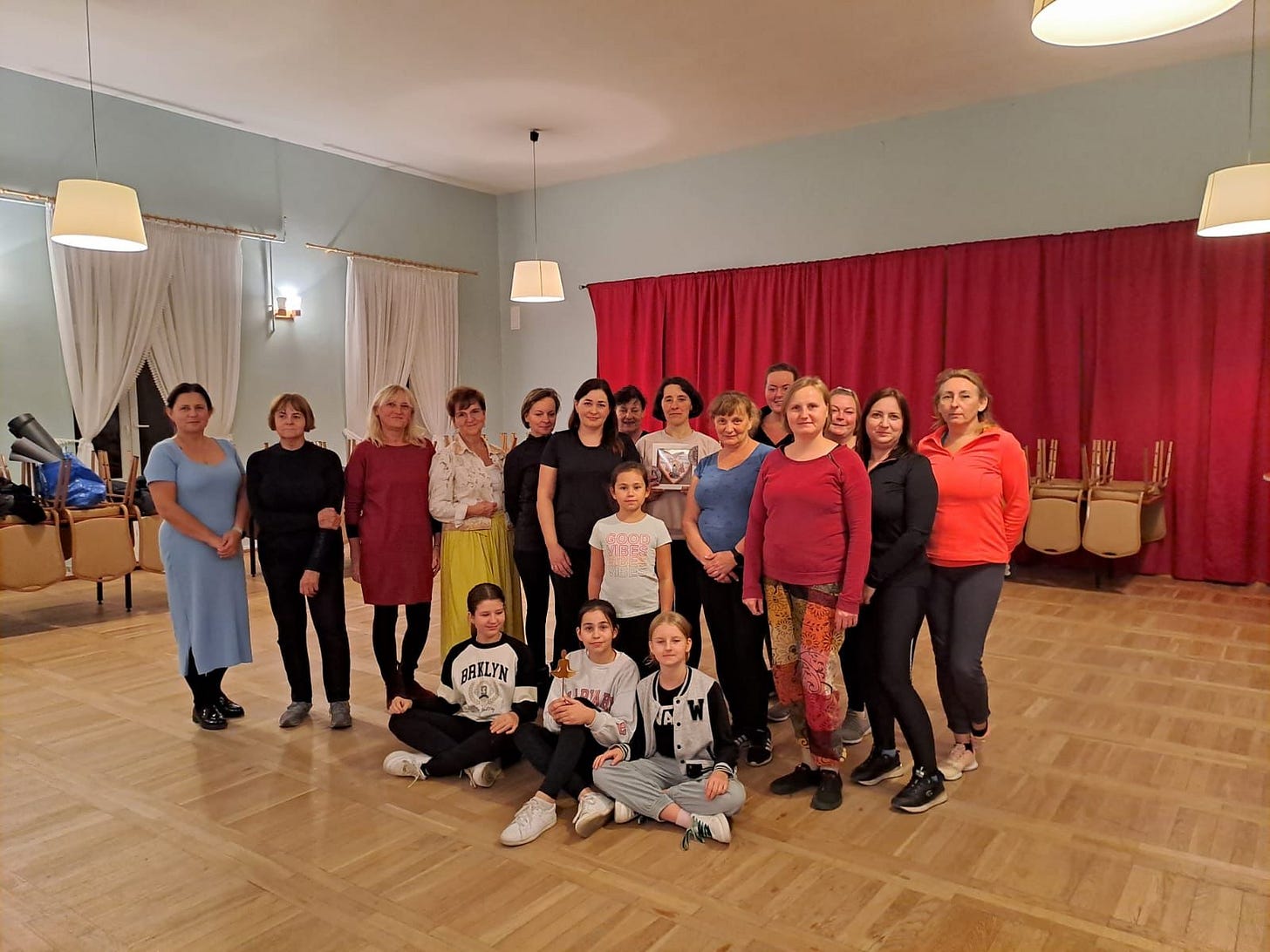
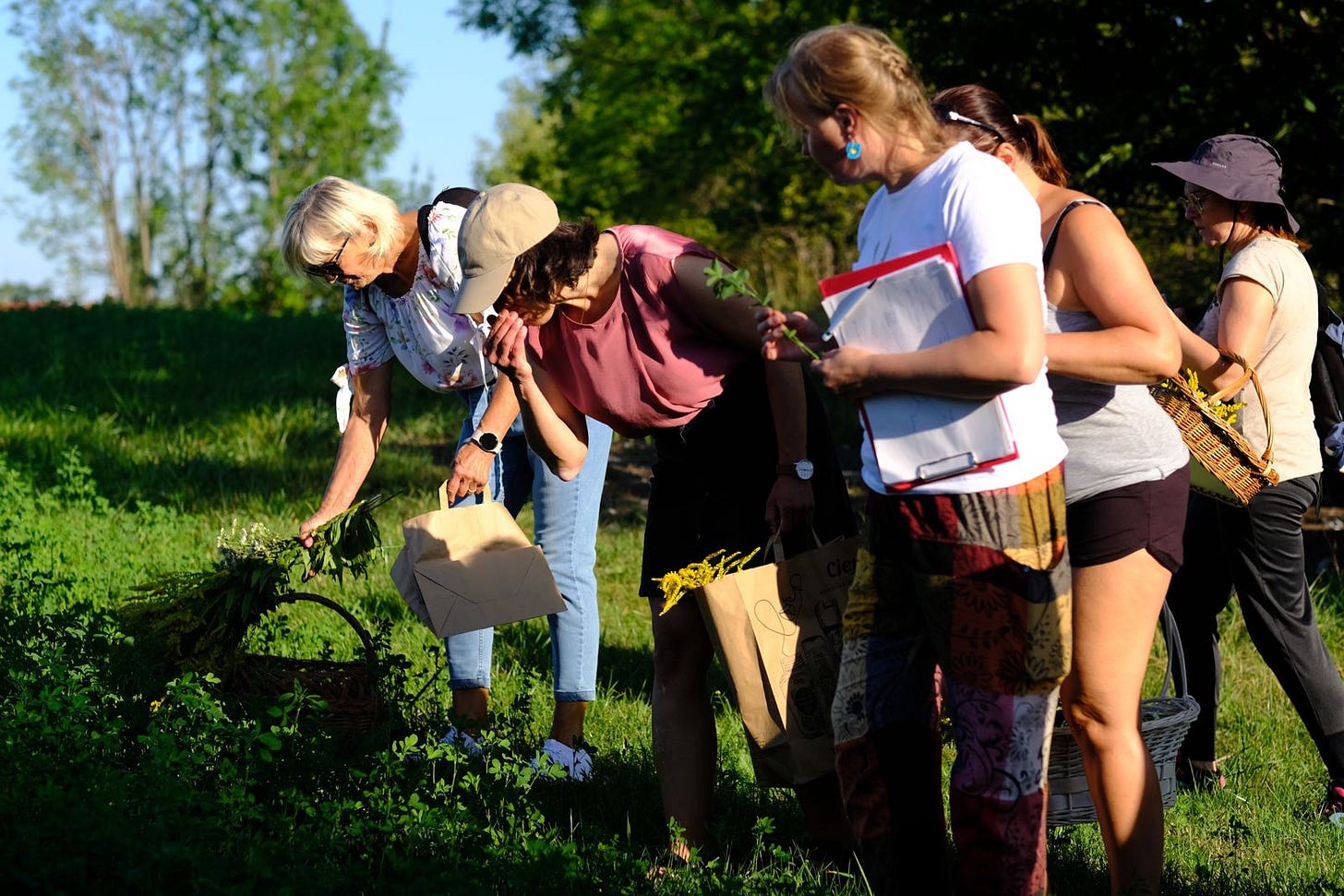

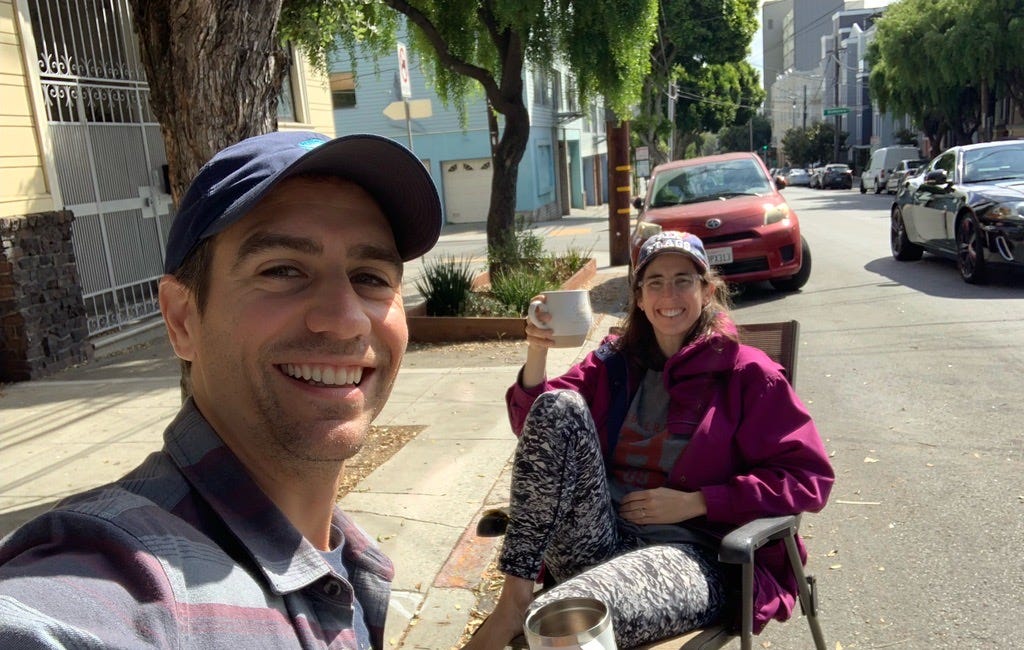

So proud of Marta, Tess, and Ian! Go you all!
I loved all these real life stories! I’m still working up the chutzpah and follow through to plan an “alley” coffee and nibbles or happy hour for my block.